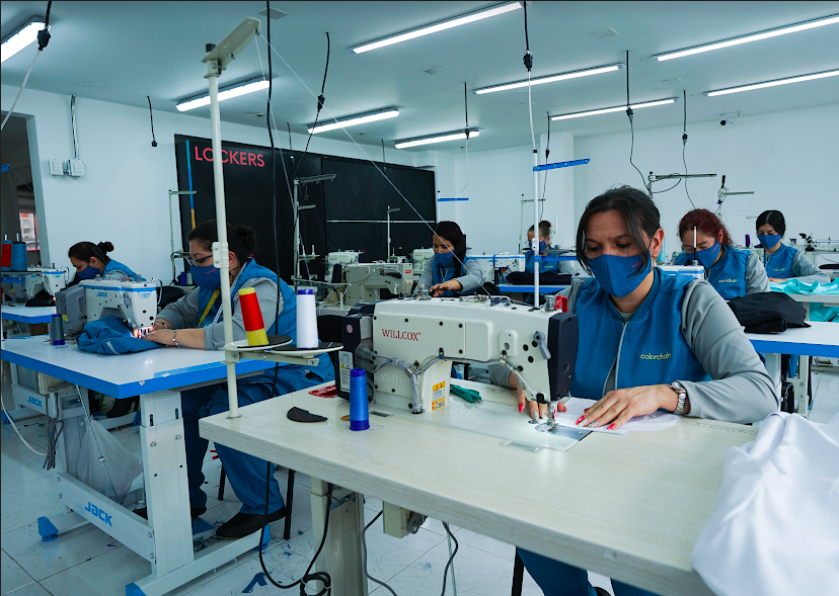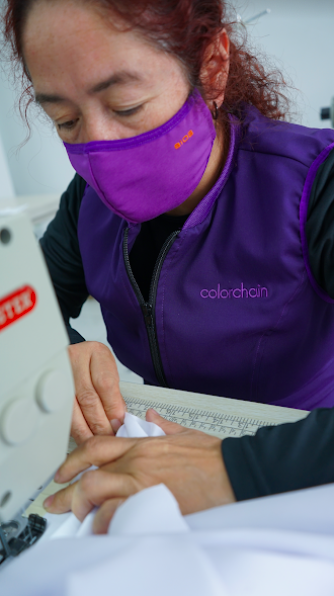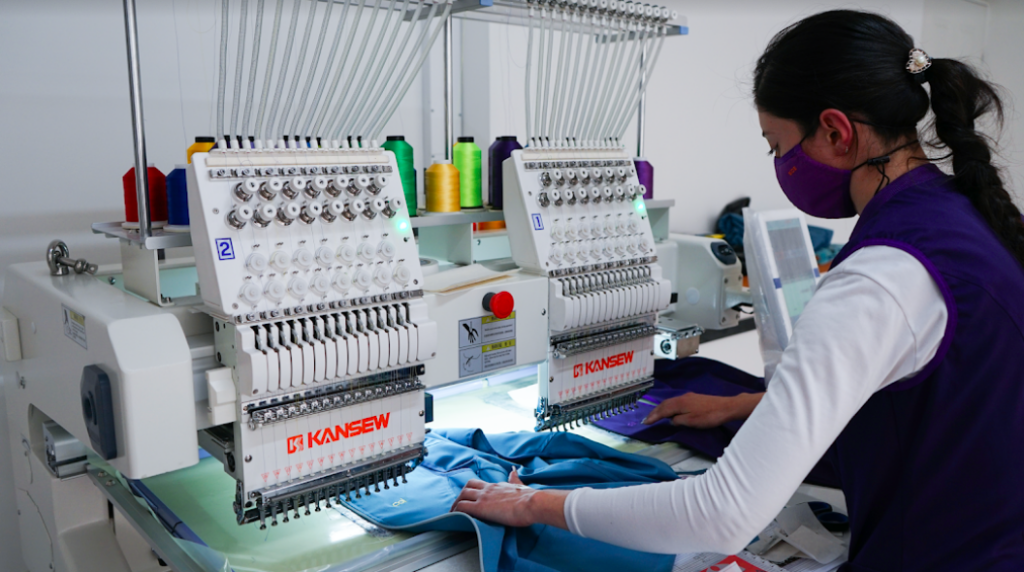
The UN recently made significant steps through a set of initiatives to reduce the extreme gender inequality affecting women worldwide. There are millions of women who are informal workers, and many were forced to stop working during the pandemic—the numbers speak for themselves with women making up 80% of domestic workers globally, and another 72% losing their jobs as a result of the pandemic.
Unfortunately, the aftermath of the pandemic has not entirely cleared and the informal economy, otherwise known as the gray economy, is stronger than ever. The International Labor Organization estimates that about 2 billion workers, some 60% of the world’s population, currently participate in it.
The gray economy is most prevalent in emerging economies, where 93% of the world’s informal employment takes place in developing countries. Although it does exist in advanced economies, the population in emerging economies depends a lot more on the gray economy. In these nations, its stronghold shapes the growth of the GDP and the opportunities available to civilians. It has also in some ways stifled these countries’ recovery from the pandemic.
In Colombia, for instance, although much economic progress has been made in the past few years, patriarchal fault lines run deep. The divide in opportunity between men and women is perpetuating the antiquated ways of the past and only degrading the potential of the economy as a whole. Let’s take a closer look at Colombia’s struggle with the gray economy, the way it’s affecting women, and one company that is looking to change this negative trend.
Colombia’s Gender-Bias Socioeconomic Gap
Colombia has historically struggled to patch the income disparities that draw a steep chasm in the country. In 2021 the poverty rate was 39.3%, a circumstance of the pandemic exacerbating an already broken socioeconomic system. In fact, a study in 2020 showed that the trend toward poverty reduction and greater equality that started over 20 years ago reversed thanks to ongoing after-quakes of the pandemic.
This has led to a gray economy with a tight grip, forcing many people to rely on informal work to make ends meet. Latin America and sub-Saharan Africa have the highest levels of economic informality, and in Colombia, the biggest players in the gray economy are market stands and a rotating carousel of street vendors. Another sector that is shadowed by the informal sector is the textile and apparel industry, which collectively represent one of the most traditional and essential sectors of Colombia’s economy.
The majority of employees in this sector are women, mainly for their cultural and historic experience with sewing. If not in that portion of the informal economy, women are often enlisted for household work such as cooking or cleaning—perpetuating quite an old-school stigma in regard to female opportunities in Colombia. In all of these circumstances, women are mainly paid under the table, which further entrenches the country’s informal economy and women’s place in it.

“Textile manufacturing in Colombia is 70% women and most of the industry remains in the gray economy,” says Dr. Carolina Hernandez, the CEO, and Founder of Colorchain, a Colombian-based medical apparel brand that looks to bring gender equity to the country’s textile industry. “Most often this work is based on a term contract, where a company can cut you loose at any time, and a worker may or may not be hired back. Companies typically only pay for each piece that is produced and there is also no type of long-term career development.”
Hernandez admitted that even her father, who has been in the industry for 40 years, wanted to hire workers for their clothing brand in the same way, but in truth, how could he know any better? It’s the way it’s always been and he didn’t know any other way. When a system has been in place since the dawn of time, people grow into that system, never questioning its merit, or perhaps if things could be different—maybe even better.
In 2021, 43% of the households in Colombia were led by women. The problem is, however, that the majority of those breadwinning women continue to be a part of the informal economy. This made Hernandez realize that the stigma would continue unless someone changed it.
Forging a New Narrative for Colombian Women
A female trailblazer, Hernandez first made major achievements in medicine before starting her own business in Colombia. Female entrepreneurs are an under-represented population, coming in at a paltry 25% of the total population of business owners.
“How do we create micro-economies, that are official, so that we can add value to the whole economy? And how can we do it in a way that empowers women?” said Hernandez. “Efforts such as these are so complex because there are social patterns that touch on everything in society.”
Carolina’s company Colorchain produces clothing for medical professionals, and it is no coincidence that the company is a stakeholder in the textile industry. The company is aimed at evolving Colombian society’s dependence on the informal economy and empowering women at the same time. They employ women, both who have formerly worked in textiles and those with a minimal amount of experience such as having some experience working a sewing machine. Regardless of how much tenure they have, the company aims to change their career outcomes.
Colorchain started at the foundation of the problem. By employing women for the long term and with regular pay, the company helps to provide job stability as well as the income that many of them need to provide for their families on a consistent basis.
“These are the decisions that we make at Colorchain daily, to try and set females up for success to work in a society that is weighted against them,” said Hernandez. “We look to create a network that communicates to females that they can have a job, can be a female, and succeed as a mother as well.”
This is just the baseline, however, as the company goes much further to try and help these women develop a career and improve their standing within Colombian society. Recently, the company partnered with BSocial, an NGO that focuses on materializing projects that generate sustainable development (social, environmental, and economic) in communities. The entity is focused on strengthening citizens’ life projects from entrepreneurship and employability.
For example, BSocial recently directed a project aimed at the gender disparities found in Colombia’s transportation industry—one of the most male-dominated industries in the country. In a pilot that started two years ago, the NGO set out on an initiative to improve the number of women who are able to drive in the country.

“This is how we bring women out of the gray economy, by giving them the skills they need to take more opportunities that they haven’t been exposed to before, which in some cases, can be as simple as the freedom of getting themselves from point A to point B,” said Hernandez.
A new project entitled “Essence of Women” that Colorchain will lead will kick off in January. A total of 10 women have been selected who have some basis of sewing knowledge and the initiative will teach them the technical abilities to perform this skill at a larger scale, as well as other capacities needed in the modern textile industry today.
BSocial will be in charge of teaching the women the necessary social aspects for being a part of a workforce—skills such as how to self-manage a schedule or how to communicate with team members. A third party will be CUN, a university in Bogota, that already has textile and design programs. The university will give the females a certification of their development in the textile industry, giving them an accreditation that provides them a better chance at lifting themselves up in society.
Colorchain plans to document this project and evaluate the impact on this group of females, sending their report to the government’s state department once the program has run its course.
Shaping a More Female-Friendly Culture

“As the head of this company, I have had exposure to different industries around the globe. Unfortunately, there is the wrong kind of similarities being seen across cultures for women,” said Hernandez. “We must stop putting bandaids on problems and start looking for a cure. We need to find the root of the problem, diagnose it, and come up with a teaching plan for success. This is what women need, especially in developing countries.”
Colorchain is growing, as manufacturing is, and is looking for talent. There are five positions the company is looking to fill before year-end and all Hernandez asks is that applicants show that they want to work, and more importantly learn.
Companies that are willing to forge a new path are critical in countries that have systems long overdue for improvement. As Colorchain grows, so too will the opportunities for women in Colombia—hopefully generating momentum towards cultural change that uplifts females country-wide.
Disclosure: This article mentions a client of an Espacio portfolio company.
